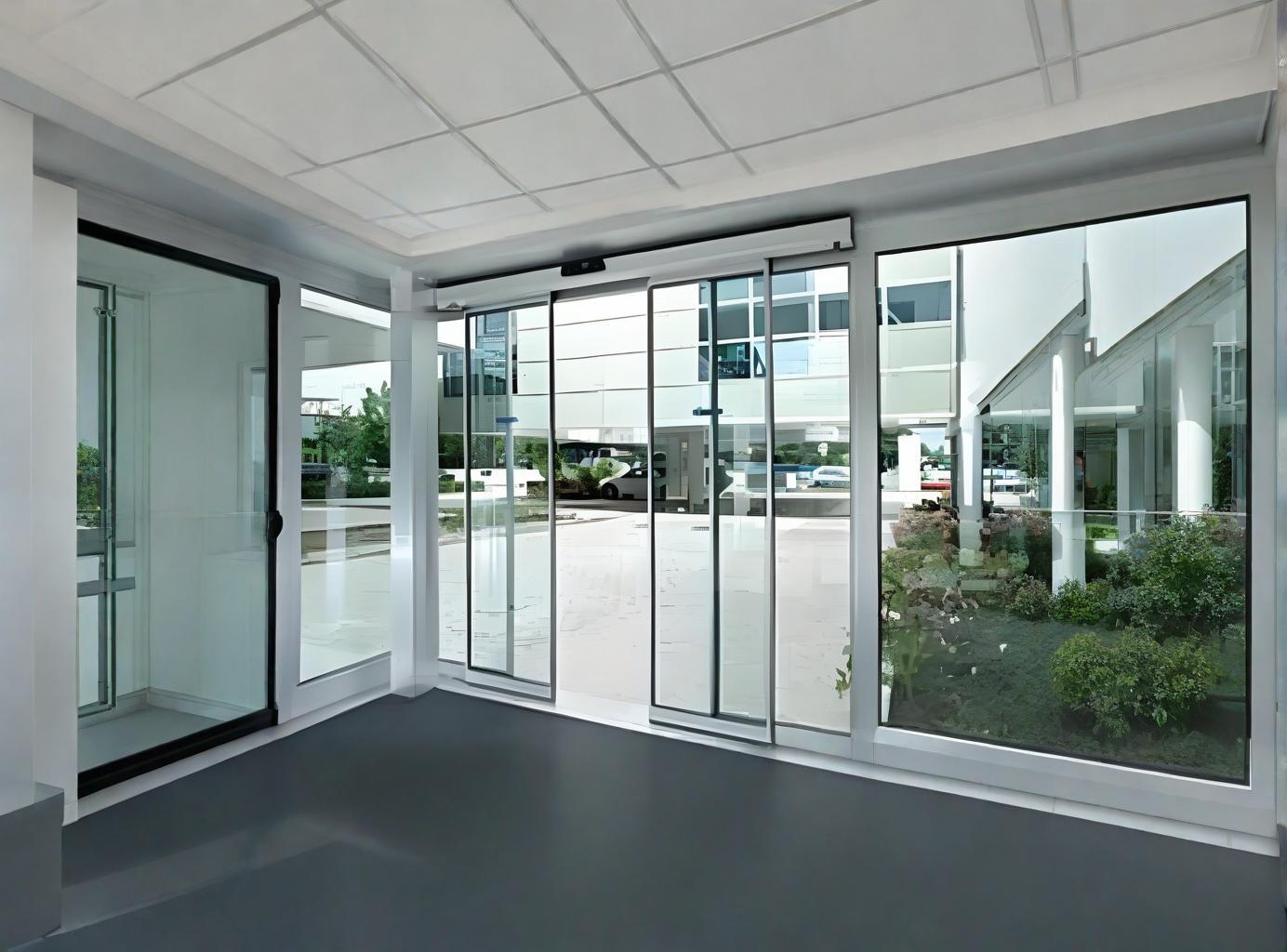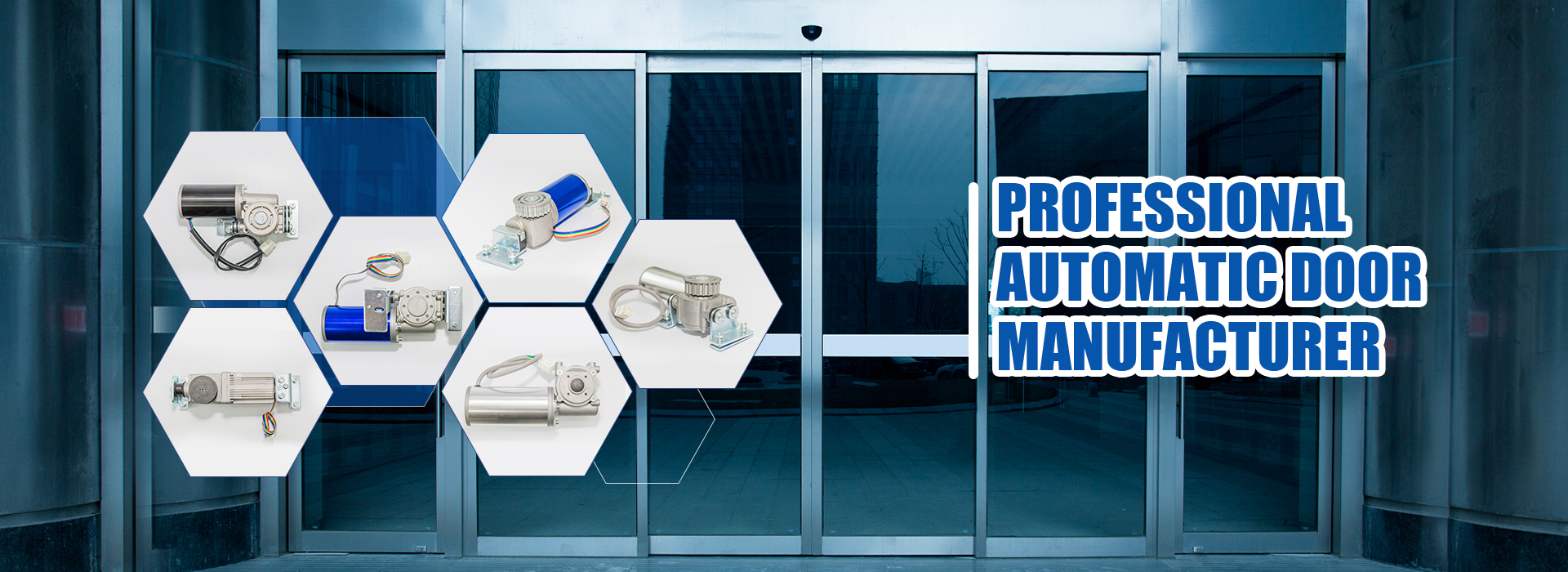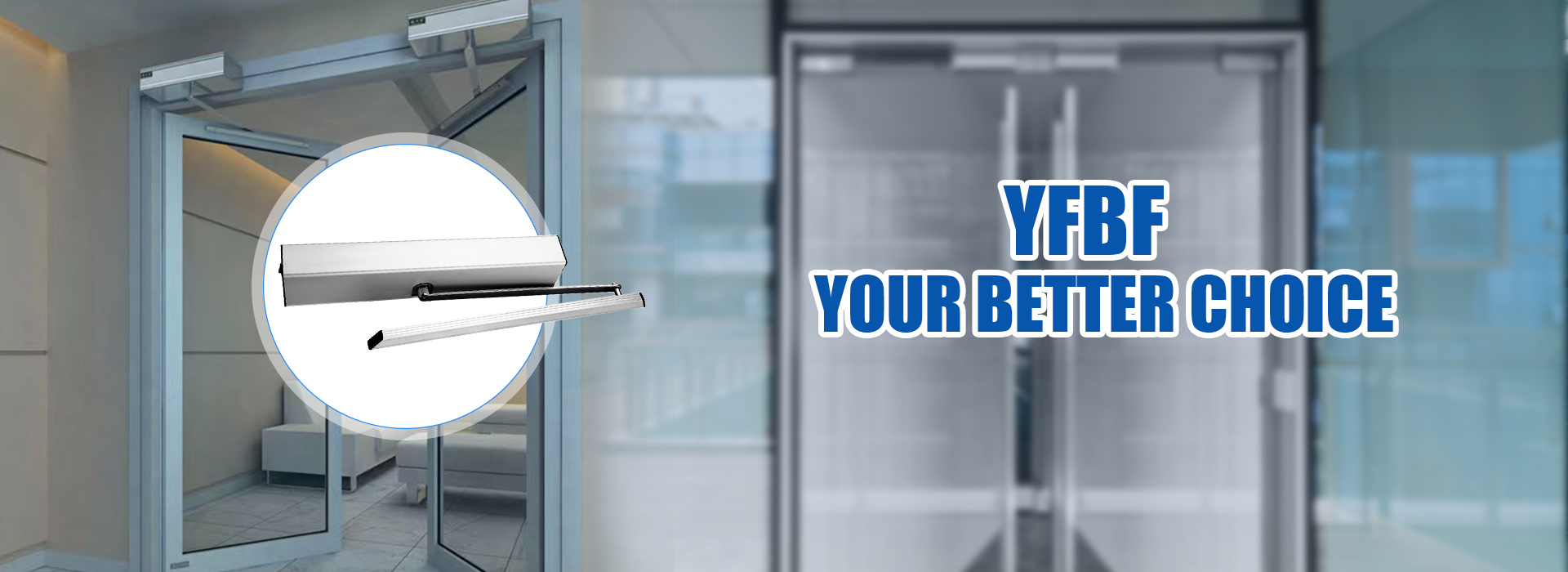
Security and accessibility play a vital role in modern buildings. A comprehensive security system reduces risks, enhances visibility, and speeds up responses to threats. Automatic Door Motor systems transform building functionality by seamlessly integrating accessibility with security, ensuring safe and smooth entry for everyone. They combine innovation with reliability to meet today’s demands.
- Security systems reduce the risk of breaches by staying ahead of threats.
- Unified security ecosystems protect against potential dangers.
- Enhanced visibility enables quicker responses to incidents.
Key Takeaways
- Automatic Door Motor systems boost security by working with access controls. They make sure only approved people can enter secure places.
- Keeping Automatic Door Motor systems in good shape is important. It helps avoid accidents and makes the doors last longer.
- These systems make it easier for everyone to get around. They are especially helpful for people with disabilities by removing physical obstacles.
Understanding Automatic Door Motor Systems
What Are Automatic Door Motor Systems?
Automatic Door Motor systems are innovative solutions that make doors open and close without manual effort. These systems rely on advanced motors and sensors to detect movement or activation signals, ensuring seamless operation. They’re commonly found in commercial buildings, hospitals, and airports, where convenience and security are essential.
The journey of door automation began in 1921 when Mr. C. G. Johnson introduced overhead garage doors. Five years later, he invented the first electric automated garage door opener, revolutionizing the industry. Today, these systems have evolved into sophisticated technologies, including chain drive, belt drive, screw drive, and jackshaft units.
Fun Fact: Modern Automatic Door Motor systems can handle heavy doors effortlessly, making them ideal for high-traffic areas.
Core Features and Components of Automatic Door Motors
Automatic Door Motor systems consist of several key components that work together to ensure smooth and reliable operation. Here’s a closer look at their features:
| Feature/Component | Description |
|---|---|
| Motor | An electric motor powers the door, while a mechanical spring ensures gentle closing. |
| Activation Device | Devices like push plates or sensors communicate with the motor to operate the door. |
| Compliance Standards | ANSI/BHMA standards define operational characteristics, including speed and safety features. |
| Low Energy Doors | These doors require user activation and are powered for opening and closing, ideal for moderate traffic. |
Brushless motors play a pivotal role in these systems. They provide silent operation, high torque, and long service life. By integrating European technology, the motor and gearbox work together to deliver strong driving power and reliable performance. Helical gear transmission ensures stability, even for heavy doors, making the system adaptable to various applications.
Enhancing Security with Automatic Door Motor Systems

Integration with Access Control Systems
Automatic Door Motor systems work seamlessly with modern access control systems to create a secure and convenient environment. By integrating with technologies like keycards, biometric scanners, or mobile credentials, these doors ensure that only authorized individuals can enter restricted areas. For example, Ampacet Corporation successfully implemented automatic door openers at their employee entrances. Employees simply present their access credentials, and the doors open automatically, enhancing both safety and convenience.
This integration not only simplifies access but also strengthens security. It eliminates the need for manual locks, which can be tampered with, and ensures that access logs are maintained digitally. Businesses can monitor entry and exit activities in real-time, providing valuable insights into building usage patterns.
Prevention of Unauthorized Access
Preventing unauthorized access is a top priority for any security system, and Automatic Door Motor systems excel in this area. These systems can be programmed to lock automatically when unauthorized attempts are detected. For instance, in high-end retail stores, synchronized operations between automatic doors and motion detectors have successfully thwarted theft attempts. When thieves tried to escape, the doors locked them inside until law enforcement arrived.
Additionally, these systems can adapt to various security protocols. They can restrict access to sensitive areas, such as server rooms or financial vaults, ensuring that only individuals with proper clearance can enter. This level of control significantly reduces the risk of breaches and enhances overall building security.
Emergency Preparedness and Safety Features
Automatic Door Motor systems play a crucial role in emergency preparedness. During critical situations like fires or active shooter scenarios, these doors can respond based on pre-set protocols. For example, they can lock down to prevent entry into sensitive areas or open widely to facilitate mass evacuation. This adaptability ensures the safety of occupants while maintaining security.
In public buildings, integrating automatic doors with emergency systems has proven to be highly effective. Hospitals, for instance, often face power outages during emergencies. However, with backup power and lockdown protocols in place, automatic doors continue to function, preventing unauthorized access and ensuring patient safety. These features make Automatic Door Motor systems an indispensable part of modern building security.
Tip: Regularly test emergency protocols with your automatic doors to ensure they function as intended during critical situations.
Additional Benefits of Automatic Door Motor Systems
Improved Accessibility for All Users
Automatic Door Motor systems make buildings more inclusive by improving accessibility for everyone. These systems are especially beneficial for individuals with disabilities, including those with mobility challenges or visual impairments. By automating door operations, they eliminate physical barriers and allow people to navigate spaces independently and safely.
- They enhance safety and inclusivity for individuals with disabilities.
- Public buildings equipped with these systems become accessible to all users.
- People with mobility aids, such as wheelchairs or walkers, can enter and exit effortlessly.
For example, a hospital with automatic sliding doors ensures that patients, visitors, and staff can move freely without struggling with heavy doors. This convenience not only improves user experience but also aligns with modern building standards for inclusivity.
Tip: Installing automatic doors at main entrances and high-traffic areas ensures accessibility for everyone, creating a welcoming environment.
Energy Efficiency and Environmental Impact
Automatic Door Motor systems contribute to energy efficiency by reducing unnecessary energy loss. These systems open and close only when needed, minimizing the amount of air that escapes from a building. This feature is particularly useful in maintaining indoor temperatures, whether it’s keeping the heat in during winter or the cool air in during summer.
Many systems also incorporate advanced sensors that detect when a door needs to open. This precision reduces the frequency of unnecessary openings, further conserving energy. Over time, these small adjustments lead to significant savings on energy bills and a reduced carbon footprint.
For instance, in a shopping mall, automatic doors prevent drafts and maintain a consistent indoor climate. This not only improves comfort for visitors but also reduces the workload on heating and cooling systems, making the building more environmentally friendly.
Note: Energy-efficient buildings with automatic doors often qualify for green building certifications, showcasing their commitment to sustainability.
Compliance with Safety and Accessibility Standards
Automatic Door Motor systems are designed to meet strict safety and accessibility standards, ensuring they are suitable for public and private buildings alike. The International Building Code (IBC) incorporates accessibility requirements from the Americans with Disabilities Act (ADA) and the Fair Housing Act (FHA). These regulations ensure that automatic doors comply with safety and accessibility guidelines, providing a comprehensive framework for building design.
| Type of Door Operator | Compliance Description |
|---|---|
| Power-Operated Doors | Automatically open for individuals, initiated by a motion sensor or pressure pad. |
| Low-Energy, Power-Operated Doors | Open after a button is pressed or panel control is accessed near the door. |
| Power-Assist Doors | Reduce the force needed to operate the door but do not provide hands-free entrance. |
The 2021 edition of the IBC also mandates that buildings with an occupancy load greater than 300 must have at least one automatic door. These doors must be either full power-operated or low-energy power-operated at public accessible entrances. By adhering to these standards, building owners ensure that their facilities are safe, accessible, and compliant with legal requirements.
Reminder: Regular inspections and maintenance of automatic doors help maintain compliance with safety standards and ensure long-term reliability.
Advanced Technologies in Automatic Door Motor Systems
IoT Integration for Smart Door Systems
The Internet of Things (IoT) has transformed how buildings manage security and accessibility. By integrating IoT into Automatic Door Motor systems, users can control doors remotely using smartphones or other connected devices. This technology enhances convenience and security, especially in commercial and residential settings. Imagine unlocking a door for a delivery person while sitting miles away. That’s the power of IoT.
Leading manufacturers are collaborating with tech firms to bring these smart features to life. IoT-enabled doors allow real-time monitoring and access management. Building managers can track who enters and exits, ensuring better control over restricted areas. These systems also support predictive maintenance. Sensors detect potential issues before they become major problems, reducing downtime and repair costs.
- The demand for IoT in door systems is growing rapidly.
- Smart solutions improve access management and remote monitoring.
- Predictive maintenance ensures long-term reliability.
AI-Powered Enhancements for Security and Functionality
Artificial intelligence (AI) takes Automatic Door Motor systems to the next level. AI-driven solutions enhance security by detecting unauthorized entry and identifying potential threats. For example, AI can differentiate between a person and an object, ensuring the door doesn’t open unnecessarily. It can even recognize dangerous items, adding an extra layer of safety.
Integrated systems use advanced analytics to improve operational efficiency. Swinging doors and turnstiles equipped with AI provide seamless access while maintaining security. Collaboration with third-party providers ensures these systems meet the highest standards. AI also enables adaptive learning, allowing doors to adjust their operation based on usage patterns.
- AI improves security by identifying threats and unauthorized access.
- Advanced analytics optimize door functionality and efficiency.
- Adaptive learning ensures systems evolve with user needs.
Pro Tip: Combining IoT and AI in door systems creates a smart, secure, and efficient environment.
Importance of Maintenance for Automatic Door Motors
Regular Inspections and Servicing
Automatic Door Motor systems require regular inspections to maintain their safety and performance. These inspections ensure that all components, including sensors and motor controls, function as intended. Daily safety checks are especially important for businesses, as they help identify potential issues before doors are used by customers or employees. For example, verifying that sensors respond correctly can prevent accidents and ensure smooth operation.
Neglecting maintenance can lead to serious problems. Malfunctioning doors have caused injuries in the past, often due to inadequate servicing. Industry standards highlight the importance of maintaining safety features and provide clear guidelines for inspections. Following these recommendations not only keeps the system running efficiently but also reduces the risk of costly repairs.
Tip: Schedule routine servicing with a professional technician to catch minor issues early and extend the life of your door system.
Ensuring Long-Term Reliability and Safety
Consistent maintenance plays a key role in ensuring the long-term reliability of Automatic Door Motor systems. Over time, wear and tear can affect components like the motor, gearbox, and sensors. Regular servicing helps identify and replace worn parts, preventing unexpected breakdowns. This proactive approach keeps the system dependable, even in high-traffic areas.
Safety is another critical aspect. Well-maintained doors operate smoothly, reducing the risk of accidents. For instance, ensuring that helical gear transmissions remain stable guarantees reliable performance, even for heavy doors. By prioritizing maintenance, building owners can create a safer environment for everyone.
Reminder: Keep a detailed maintenance log to track inspections and repairs. This ensures compliance with safety standards and helps identify recurring issues.
Automatic Door Motor systems offer unmatched benefits across various sectors. They enhance security, improve accessibility, and boost energy efficiency. For instance, airports benefit from better passenger flow, while hospitals maintain hygiene and safety with touchless doors. Retail spaces integrate these systems for customer convenience and security.
Looking ahead, smart technologies and IoT will redefine door automation. Energy-efficient designs and sustainability efforts will drive innovation, making buildings smarter and greener.
Author Information
Edison
Tel: +86-15957480508
Email: edison@bf-automaticdoor.com
FAQ
What types of buildings benefit most from Automatic Door Motor systems?
Automatic Door Motor systems work best in high-traffic areas like hospitals, airports, malls, and office buildings. They enhance accessibility, security, and energy efficiency in these spaces.
Tip: Consider installing them in entrances with heavy foot traffic for maximum impact.
How do Automatic Door Motor systems improve energy efficiency?
These systems reduce energy loss by opening only when needed. Advanced sensors prevent unnecessary operation, helping maintain indoor temperatures and lowering energy bills.
Note: Energy-efficient doors contribute to a building’s sustainability goals.
Are Automatic Door Motor systems easy to maintain?
Yes, regular inspections and servicing keep them running smoothly. Maintenance ensures long-term reliability, safety, and compliance with accessibility standards.
- Schedule routine checks with professionals.
- Replace worn parts promptly to avoid breakdowns.
Reminder: Keep a maintenance log to track inspections and repairs.
Post time: May-13-2025



